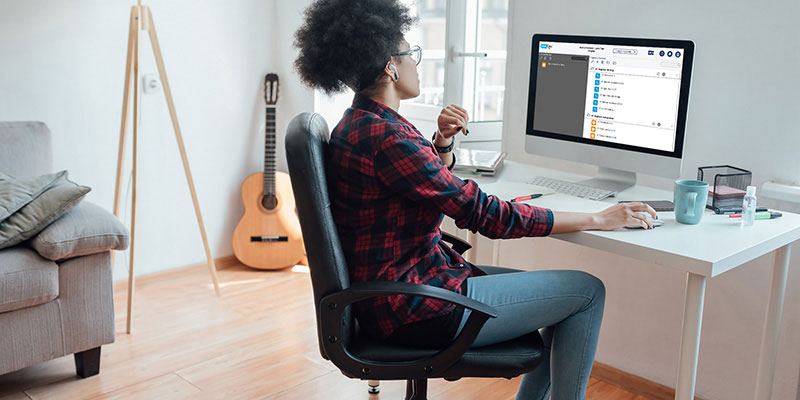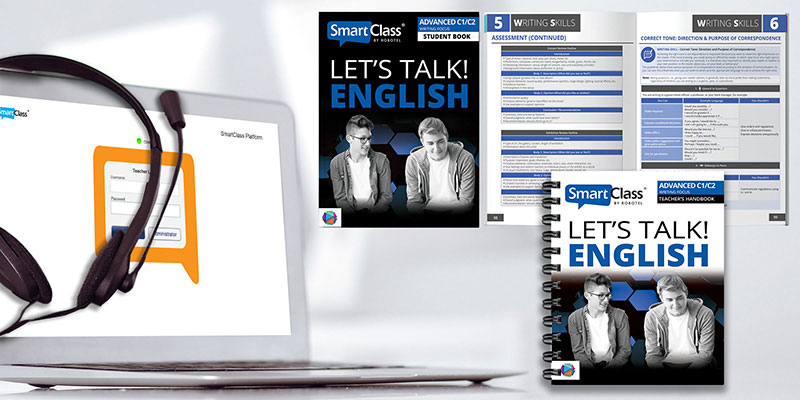Kinesthetic activities for foreign language teaching
We all learn differently, so it's important for us as teachers to remember that about our students as well, and make sure we include many different types of activities in our classrooms. When it comes to language teaching, we often forget one crucial type of activity: hands-on or kinesthetic activities.
- Introduction
- The different types of learners
- What are kinesthetic exercises?
- Examples of kinesthetic activities
- Conclusion
Video Summary
1. Introduction
When you think back to your childhood, how would you say you learned? Which facts and concepts do you still remember? Was it the chart your teacher made you memorize, a text you read in class, a video or lecture you watched/listened, or the experiment you conducted in science class?
Not everyone is going to answer this question the same. We all learn differently, so we teachers need to remember that about our students as well, and make sure we include many different types of activities in our classrooms.
When it comes to language teaching, we often forget one crucial type of activity: hands-on or kinesthetic activities. It's just not as "natural" to have students DO something in your foreign language class. They have to learn words, grammar concepts, read/write in the new language, so we often don't think we have time to create something interactive.
2. The different types of learners
Before taking a closer look at these types of kinesthetic activities, I think it's important to review the four major types of learners.

Auditory:
Audio learners learn best when they hear information, so lectures and listening activities work well for them. They also like repeating, summarizing in their own words, ask questions, or be called on for answers as they learn best that way.
Visual:
Visual learners learn best when they SEE information. Graphics, relationships, and images charts are the favorite materials for visual learners.
Read/Write:
These types of learners love to interact with texts. They like, you guessed it right, reading and writing activities, taking notes, and filling out worksheets.
Kinesthetic:
Kinesthetic, or hands-on learners, prefer "learning by doing" such as games, experiments, role plays, and more.
3. What are kinesthetic exercises?
Anything that involves movement, creativity, touching, smelling, or feeling something is a great kinesthetic exercise. Some examples include:
- role play
- pairing/grouping activities
- projects
- debates
- games
- whole body letters
- cooking/baking
- sensory boxes
- walking stories
- relay race
4. Examples of kinesthetic activities
As mentioned above, it's sometimes hard to find/come up with some hands-on activities for students in language classes. That's why the "Let's Talk! English" curriculum includes different games, projects, and many many pairing/grouping activities around conversations for students. There is something for every type of learner, but let's look at the actual games there are:
4.1. Vocab Master
.png?width=565&name=2020-02-20%20(7).png)
Vocab Master is a fun game to practice vocabulary and get students to talk and explain words. Simply write the vocab words on little cards, form two teams, and let the fun begin: One student picks up the cards and starts explaining them to his/her team without using the word.
Variation for beginners: add a word or two underneath the vocab word that students CAN use to explain the word.
Variation for advanced learners: leave the extra words underneath the vocab word but tell them those are words they CAN'T use to make it even harder!
4.2. Marker War
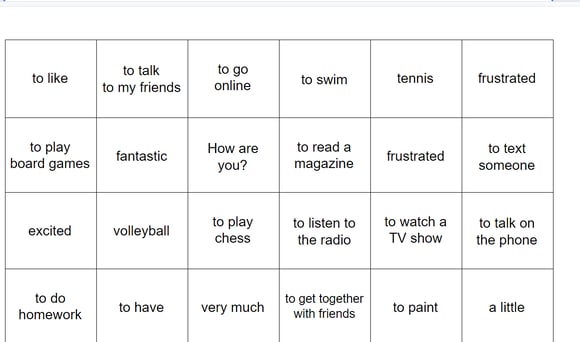
Marker, set, go! Students work in pairs and try to find the word/phrase the teacher says before the partner does. Whoever is fastest, highlights the box with his/her marker.
4.3. Bingo
Play a round of bingo with vocabulary words or grammar concepts. Either give your students the words to fill into the bingo grid or give them a category such as "animals" or "classroom commands." They have to fill in their own words/phrases and mark them when you say them. The first one to check off 5 in a row wins!
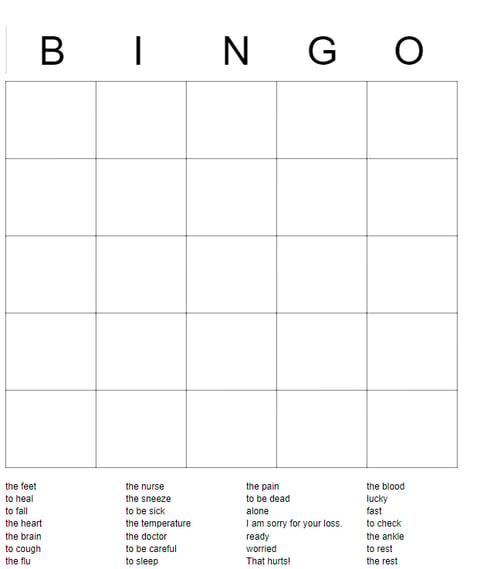
4.4. Puzzles
Cut out the different puzzle pieces, so students have to align them again. In this case: Match the infinitive with the correct simple past form of each verb.

4.5. Mystery Person
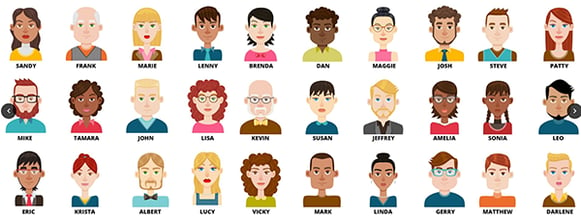
Students play in pairs or small groups. They each pick a person they are going to "be" for the duration of the game. They then ask each other closed questions to find out who the other person is.
Sample Questions: Do you have glasses? Do you have brown hair? Are your eyes blue?
4.6. Tic Tac Toe
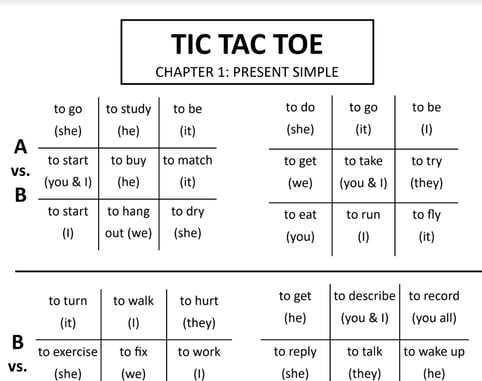
Students have to answer questions/say the correct form before they can place their X/O.
4.7. Team Trivia
Team Trivia is a fun game to review new concepts and words in foreign language teaching. Students form two teams and take turns picking a category. Each category has multiple questions but with different difficulties. The correct answer to an easy question earns them 50 points, whereas the correct answer to the most difficult question will award them 400 points. If a team answers incorrectly, the opposing team can steal the points by giving the correct answer.
.png?width=575&name=2020-09-10%20(2).png)
.png?width=581&name=2020-09-10%20(3).png)
5. Conclusion
Teaching a foreign language is so much fun for us as teachers, and we always try our best to include fun and meaningful activities for your students as well. Finding the right balance between audio, visual, reading, writing, and kinesthetic activities can be challenging, so it's important to have the time to research and plan these. (And trust me, I know the struggle is REAL!). Hopefully, you got some inspiration from these games, and you can recreate these in your foreign language and have as much fun with your students as we do.
If you want to find out more about our English curriculum that includes all of these amazing kin4esthetic activities, download ouyr content brochure or boko a meeting with one of our product expert!


